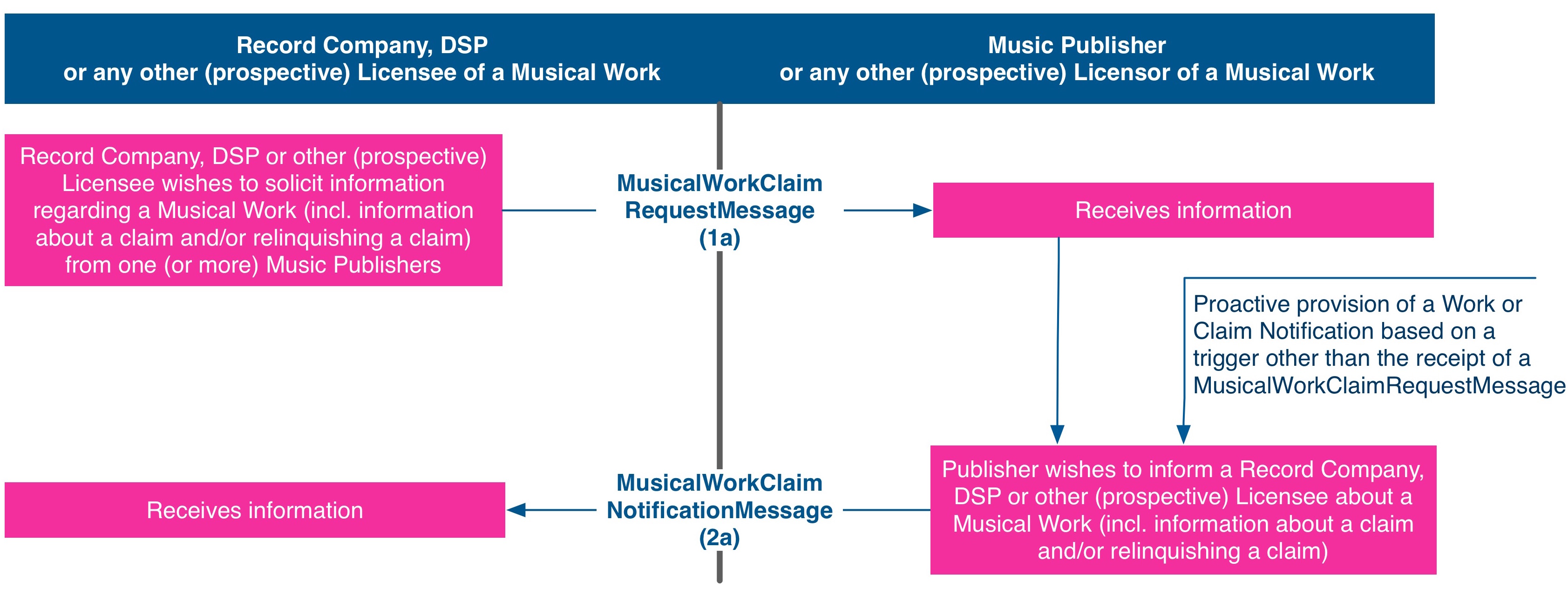5.1 Overall Choreography
The figures below depict the choreography defined by this standard.
This standard supports two approaches to exchanging Right Share information: Either a (prospective) Licensee and a (prospective) Licensor can exchange information directly with one another, or the communication can be communicated via a central Hub which may act as a information routing service and/or as a Right Share information cache.
Figure 1: Direct communication between a (prospective) Licensee and a (prospective) Licensor
Figure 2: Communication between a (prospective) Licensee and a central Hub
Figure 3: Communication between a central Hub and a (prospective) Licensor
The tables below summarises the points in the Musical Work and Right Share Notification Choreography that a message is sent.
Message Name | Initiating Event | Sender | Recipient | |
1a |
| If a record company, DSP, Hub or other company wishes to receive information about a Musical Workand/or its ownership (e.g. for the purposes of obtaining a licence or to make available or monetise a Release containing a Musical Work) but has no, or insufficient, claims or Right Share information. | (prospective) Licensee | (prospective) Licensor |
1b | (prospective) Licensee | Central Hub | ||
1c | Central Hub | (prospective) Licensor | ||
2a |
| If a Works Licensor Licensor or Hub wishes to inform a DSP or Hub about its own or other companies' claims or Right Share information with respect to Works embodied in a Release*
| (prospective) Licensor | (prospective) Licensee |
2b | (prospective) Licensor | Central Hub | ||
2c | Central Hub | (prospective) Licensee | ||
The exchange of the information in these messages can be effected by two different message exchange protocols: SFTP and Web Services. Details on these are defined in Clauses 5.2 ad 5.3 respectively.
*) As indicated, the message can be used by a Licensor to communicate ownership information regarding a Musical Work not owned or controlled by the sender of the message. In that case, the recipient may use the information not as authoritative but solely as “helpful information”.


